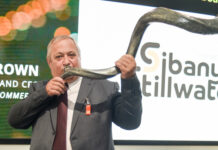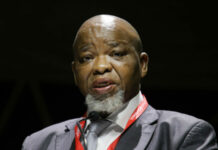
SOUTH Africa’s Department of Mineral Resources & Energy (DMRE) today published a five year exploration strategy of how it intends to achieve previously stated ambitions to capture 5% of global mineral exploration spend worth $900m.
The document, which is part of President Cyril Ramaphosa’s South African Economic Reconstruction and Recovery Plan, has at its heart a commitment to public private partnership (PPP).
Although the document doesn’t provide details, it says the Council for Geoscience (CGS) will play an integral role in assessing which projects get developed.
Before that the DMRE will first “identify projects with the greatest geological potential over the next five years, provide both technical and financial support to these projects until feasibility stage, if positive”.
Critically, the only projects that will stand a chance of development in this particular model are those with 51% black ownership.
There is no explict mention of the CGS taking a stake in any ventures where it has conducted exploration work, as suggested by the council it might do last year. Mosa Mabusa, head of CGS drew criticism at the Joburg Indaba conference in October by suggesting the CGS would be an integral part in mineral discovery, funding and development. “Relying on the government to find the next large deposit is reasonably unrealistic,” said Brett Beatty of Resource Capital Fund.
As part of the strategy, the DMRE also set down a proposal to improve geological mapping, again through the CGS. To this end, the CGS intends to increase the scope of its 1:50,000 mapping capability from 9% to 14% of the country’s land surface in five years, having already increased the footprint from 5% over the same period.
“This exercise will improve the country’s geoscience data and information and encourage investment in the exploration space,” the document, which is signed off by minerals and energy minister Gwede Mantashe, said.
As a result, the DMRE intends to “implement at least 25% of active prospecting rights” which have three or more years before expiration in five years. In so doing, the government has returned to its “use it or lose it” policy on which the 2004 Minerals and Petroleum Resources Development Act (MPRDA) was established.
The DMRE outlines a strengths, weaknesses opportunities, and threats test which predictably sets South Africa’s geological wealth against infrastructural deficits including power rationing as well as social disruption.
Paul Miller, director of Amaranthcx, an industry consultancy, said that in order to attract 5% of exploration spend there would have to be a significant hike in annual mineral exploration and evaluation spend from R1.2bn currently to between R6bn to R8bn.
“The CGS’s total annual budget is about R550m of which only about half is spent on projects,” he said in an emailed comment. “The IDCs [Industrial Development Corporation’s] proposed exploration fund is R100m. Our incumbent miners, except De Beers, do no off mine exploration.
“So is the DMRE going to be able to substantially fill the gap?,” he said.











